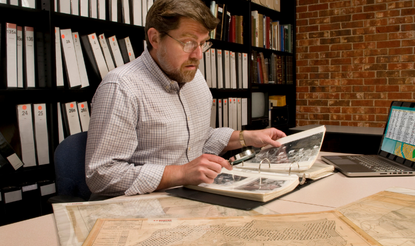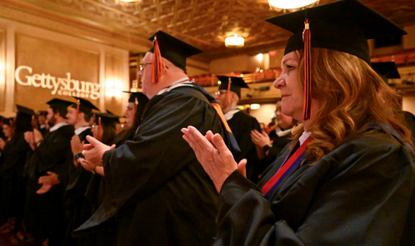Women in American Politics in the Twentieth Century
by Sara Evans

At the beginning of the twentieth century, women were outsiders to the formal structures of political life—voting, serving on juries, holding elective office—and they were subject to wide-ranging discrimination that marked them as secondary citizens. Over the course of the century, however, women in America moved dramatically (though still not equally) into all aspects of public life—politics, labor-force participation, professions, mass media, and popular culture.
Deeply divided by race, class, religion, ethnicity, and region, women do not always identify with one another, and as a result women’s collective identity—their sense of solidarity as women—has waxed and waned. Twice in the twentieth century, however, a significant wave of feminist activism generated a surge of change in women’s status. Each wave continued in less visible ways into subsequent decades. The story of these changes is a story of persistent activism, sometimes louder and more unified, sometimes quieter and dispersed. It is also a story of dramatic change, as women have staked their claim to full participation in American public and political life.
In 1900 women’s legal standing was fundamentally governed by their marital status. They had very few rights. A married woman had no separate legal identity from that of her husband. She had no right to control her biological reproduction (even conveying information about contraception, for example, was illegal), and no right to sue or be sued since she had no separate standing in court. She had no right to own property in her own name or to pursue a career of her choice. Women could not vote, serve on juries, or hold public office. According to the Supreme Court, they were not "persons" under the Fourteenth Amendment to the Constitution, which guarantees equal protection under the law.
These realities reflected an underlying ideology about women and men that allocated the public realms of work and politics to men and that defined women’s proper place in society as fundamentally domestic. With women confined to the realm of the home, their responsibility to society lay in raising virtuous sons (future citizens) and dutiful daughters (future mothers). Over the course of the nineteenth century, however, women had pushed at the boundaries of their domestic assignment, both by choice and necessity. They invented forms of politics outside the electoral arena by establishing voluntary associations and building other institutions in response to unmet social needs. In the 1830s, when women like Sarah and Angelina Grimké began to speak publicly against slavery, the mere appearance of a woman as a public speaker was considered scandalous. By 1900, however, women appeared in all manner of public settings, laying a foundation for change in the twentieth century.
This brief sketch of women’s conditions at the beginning of the century points to several seeds of change that would bear fruit in the first few decades. The expansion of women’s education, and women’s move into a wide variety of reform efforts and professions laid the ground for a massive suffrage movement that demanded the most basic right of citizenship for women.
The claim of citizenship was in many ways a deeply radical challenge to the ideology of separate spheres for men and women. It asserted the right of women to participate in civic life as individuals rather than to be represented through the participation of their husbands or fathers. The growing power of the women’s suffrage movement rested both on women’s collective consciousness, born in female associations, and on increased individualism among women in an urbanizing, industrializing economy.
Although the suffrage movement was clearly dominated by educated, white women, it became a mass movement in the 1910s when its goals were increasingly shared by working-class and African American women who had their own political agendas, which were linked to struggles of working people and which opposed racial discrimination. The shared exclusion of these different groups from the individual right of civic participation underscored their common womanhood.
Following their victory when the Nineteenth Amendment was passed, leaders of the national American Woman Suffrage Association joyfully dismantled their organization and reassembled as the newly formed League of Women Voters. Their new task, as they defined it, was to train women to exercise their individual citizenship rights. Such a reorientation was congruent with the popular culture of the 1920s, which emphasized individual pleasures along with individual rights. The development of a consumer economy that emphasized pleasure and used sexuality to sell products offered women paths out of submissive domesticity and into more assertive forms of individualism. These paths did not require solidarity; indeed they undermined it. In this environment, the female subculture that relied on a singular definition of "woman" eroded. Female reform efforts remained a powerful force in American politics—laying much of the groundwork for the emergence of a welfare state—but a broad-based movement for women’s rights no longer existed after 1920. (Similarly, the pace of reform in other areas like education and labor-force participation reached a plateau and remained relatively unchanged for several decades after 1920.) To many Americans in the 1920s and successive decades, modern women were individuals. And feminism became an epithet.
The loss of female solidarity meant that women’s organizations in subsequent decades drew on narrow constituencies with very different priorities. Professional women, lonely pioneers in many fields, felt the continuing sting of discrimination and sought to eradicate the last vestiges of legal discrimination with an Equal Rights Amendment (ERA). The National Women’s Party, one of the leading organizations in the struggle, first proposed the ERA in 1923. But another group of suffragists, social reformers who feared that recently won protections for working women might be lost, strongly opposed the ERA, though they continued to advocate a stronger role for government in responding to social welfare. Many of them—with leaders like Eleanor Roosevelt—assumed key positions in the 1930s and shaped the political agenda known as the New Deal. In particular, their influence on the Social Security Act helped to create the foundations of the welfare state. Even among female reformers, however, alliances across racial lines remained rare and fraught with difficulty. As the progressive female reform tradition shaped an emergent welfare state, African American voices remained muted, with the concerns of these reformers about the needs of working mothers left unaddressed.
By mid-century the conditions that would stimulate another surge of activism had emerged. During the Second World War women joined the labor force in unprecedented numbers. Perhaps most significant, by 1950 it was normative for married women and women over thirty-five to be in the workforce. Yet Cold War culture, in the aftermath of World War II, reasserted traditional gender roles. The effort to contain women within the confines of the "feminine mystique" (as Betty Friedan later labeled this ideology), however, obscured rising activism among different constituencies of women. Under the cover of popular images of domesticity, women were rapidly changing their patterns of labor-force and civic participation, initiating social movements for civil rights and world peace, and flooding into institutions of higher education.
In the 1960s and 1970s, women’s activism was part of a wider "rights revolution" that eliminated most legally sanctioned discrimination based on race and gender. The slogan "the personal is political" became the ideological pivot of the second wave of American feminism. This belief drove a variety of challenges to gendered relations of power, whether embodied in public policy or in the most intimate personal relationships.
The force of this direct assault on the public/private dichotomy has left deep marks on American politics, on American society, and on the feminist movement itself. Issues like domestic violence, child care, abortion, and sexual harassment have become central to the American political agenda, exposing deep divisions in American society that are not easily subject to the give-and-take compromises of political horse-trading. Controversy over these issues revealed not only male hostility to various feminist demands but also deep fissures among women themselves. By the late 1970s, with the mobilization of anti-abortion forces and the formation of Phyllis Schlafly’s Stop-ERA movement, antifeminism had become a strong political force. In the face of widespread cultural anxiety about equality for women and changing gender roles, the Equal Rights Amendment stalled after 1975 and went down to defeat in 1982 despite an extension of the deadline for ratification. Antifeminism drew on the insecurities of a declining economy in the wake of the Vietnam War and on the growing political power of the New Right, which made cultural issues (abortion, the ERA, family values, and homophobia) central to its agenda.
Not unlike the situation in the 1920s, antifeminism flourished in the 1980s even as women aggressively pursued individualistic goals that a new legal climate allowed. "Firsts" abounded: In 1981 President Reagan nominated the first woman to the Supreme Court, Sandra Day O’Connor; in 1984, for the first time a major political party nominated a woman (Representative Geraldine Ferraro) to run for vice president; the first woman astronaut flew into space, while newly educated women flooded into professions and businesses from which they had been barred. And political activists invented new mechanisms of power and influence. In 1984, by collecting and packaging small checks from tens of thousands of women to support female candidates, Ellen Malcolm founded EMILY’s List, which in the 1990s became the most powerful PAC (Political Action Committee) in the Democratic Party. By the end of the century, women not only enjoyed a wide range of civic rights, but had also made serious advances in electoral politics at local and state levels. Even the possibility of a woman president was being widely discussed, something that would have been unthinkable in 1900. While change has not been steady, the American political landscape has clearly been transformed by women over the past 100 years.
Sara Evans is Regents Professor Emeritus of History at the University of Minnesota. Her publications include Tidal Wave: How Women Changed America at Century’s End (2003) and Personal Politics: The Roots of Women’s Liberation in the Civil Rights Movement and the New Left (1979).
Suggested Sources
Books and Printed Materials
On women in the 20th century:
Banner, Lois W. Women in Modern America: A Brief History. Fort Worth: Harcourt Brace College Publishers, 1995.
Chafe, William Henry. The Paradox of Change: American Women in the 20th Century. New York: Oxford University Press, 1991.
Evans, Sara M. Tidal Wave: How Women Changed America at Century’s End. New York: Free Press, 2003.
Kessler-Harris, Alice. In Pursuit of Equity: Women, Men, and the Quest for Economic Citizenship in 20th-Century America. New York: Oxford University Press, 2001.
Sarkels, Sandra J., Susan Mallon Ross, and Margaret A. Lowe. From Megaphones to Microphones: Speeches of American Women, 1920–1960. Westport, CT: Praeger, 2003.
Schneider, Dorothy, and Carl Schneider. American Women in the Progressive Era, 1900–1920. New York: Facts on File, 1993.
Schneir, Miriam, ed. Feminism in Our Time: The Essential Writings, World War II to the Present. New York: Vintage Books, 1994.
Sigerman, Harriet, ed. The Columbia Documentary History of American Women since 1941. New York: Columbia University Press, 2003.
Ware, Susan, comp. Modern American Women: A Documentary History. Boston: McGraw-Hill, 2002.
On the League of Women Voters and the movement it represents:
Fowler, Robert Booth. Carrie Catt: Feminist Politician. Boston: Northeastern University Press, 1986.
Sharer, Wendy B. Vote and Voice: Women’s Organizations and Political Literacy, 1915–1930. Carbondale: Southern Illinois University Press, 2004.
Stuhler, Barbara. For the Public Record: A Documentary History of the League of Women Voters. Westport, CT: Greenwood Press, 2000.
For the history of the Equal Rights Amendment in the 20th century:
Becker, Susan D. The Origins of the Equal Rights Amendment: American Feminism between the Wars. Westport, CT: Greenwood Press, 1981.
Feinberg, Renee. The Equal Rights Amendment: An Annotated Bibliography of the Issues, 1976–1985. Westport, CT: Greenwood Press, 1986.
Jeydel, Alana S. Political Women: The Women’s Movement, Political Institutions, the Battle For Women’s Suffrage and the ERA. New York: Routledge, 2004.
Steiner, Gilbert Y. Constitutional Inequality: The Political Fortunes of the Equal Rights Amendment. Washington, DC: Brookings Institution, 1985.
On Alice Paul and the National Woman’s Party:
Butler, Amy E. Two Paths to Equality: Alice Paul and Ethel M. Smith in the ERA Debate, 1921–1929. Albany: State University of New York Press, 2002.
Lunardini, Christine A. From Equal Suffrage to Equal Rights: Alice Paul and the National Woman’s Party, 1910–1928. New York: New York University Press, 1986.
Studies of the changing role of African American women in movements to win rights for American women at large:
Andolsen, Barbara Hilkert. "Daughters of Jefferson, Daughters of Bootblacks": Racism and American Feminism. Macon, GA: Mercer University Press, 1986.
Gordon, Ann D., and Bettye Collier-Thomas, eds. African American Women and the Vote, 1837–1965. Amherst: University of Massachusetts Press, 1997.
Ruiz, Vicki L. and Ellen Carol DuBois, eds. Unequal Sisters: A Multicultural Reader in U.S. Women’s History. New York: Routledge, 1994.
Terborg-Penn, Rosalyn. African American Women in the Struggle for the Vote, 1850–1920. Bloomington: Indiana University Press, 1998.
By Betty Friedan:
Friedan, Betty. The Feminine Mystique. Introduction by Anna Quindlen. New York: Norton, 2001.
Friedan, Betty. The Second Stage. Cambridge, MA: Harvard University Press, 1998.
General studies and documentary sources on woman activists in the decades after World War II:
Berkeley, Kathleen C. The Women’s Liberation Movement in America. Westport, CT: Greenwood Press, 1999.
Collier-Thomas, Bettye, and V.P. Franklin, eds. Sisters in the Struggle: African American Women in the Civil Rights-Black Power Movement. New York: New York University Press, 2001.
Crawford, Vicki L. Crawford, Jacqueline Anne Rouse, and Barbara Woods. Women in the Civil Rights Movement: Trailblazers and Torchbearers, 1941–1965. Bloomington: Indiana University Press, 1990.
DuPlessis, Rachel Blau, and Ann Snitow. The Feminist Memoir Project: Voices from Women’s Liberation. New York: Three Rivers Press, 1998.
Echols, Alice. Daring to Be Bad: Radical Feminism in America, 1967–1975. Minneapolis: University of Minnesota Press, 1989.
Harrison, Cynthia Ellen. On Account of Sex: The Politics of Women’s Issues, 1945–1968. Berkeley: University of California Press, 1988.
Rupp, Leila J., and Verta A. Taylor. Survival in the Doldrums: The American Women’s Rights Movement, 1945 to the 1960s. New York: Oxford University Press, 1987.
Abortion and reproductive rights are discussed in:
Nelson, Jennifer. Women of Color and the Reproductive Rights Movement. New York: New York University Press, 2003.
Solinger, Rickie, ed. Abortion Wars: A Half Century of Struggle, 1950–2000. Berkeley: University of California Press, 1998.
For changing aspects of women’s activism since 1980:
Brown, Ruth Murray. For a "Christian America": A History of the Religious Right. Amherst, NY: Prometheus Books, 2002.
Clift, Eleanor, and Tom Brazaitis. Madam President: Women Blazing the Leadership Trail. New York: Routledge, 2003.
Critchlow, Donald T. Phyllis Schlafly and Grassroots Conservatism: A Woman’s Crusade. Princeton: Princeton University Press, 2005.
Internet Resources
The National Equal Rights Amendment:
http://www.equalrightsamendment.org/
The Sewall-Belmont House and Museum in Washington DC is maintained by the National Woman’s Party:
http://www.sewallbelmont.org/
Search American Memory’s Women’s History Collections for Alice Paul and the National Woman’s Party:
http://memory.loc.gov/ammem/browse/ListSome.php? category=Women's%20History
National Park Service provides an online exhibition on "Rosie the Riveter: Women Working during World War II," with first person memoirs, photos, posters, historical essays, etc.:
http://www.nps.gov/pwro/collection/website/home.htm
National Organization for Women:
http://www.now.org
Eagle Forum (to which Phyllis Schlafly is a regular contributor):
http://www.eagleforum.org/
The League of Women Voters:
http://www.lwv.org
The Eleanor Roosevelt Papers project at George Washington University provides lists of books, websites, lesson plans:
http://www.gwu.edu/~erpapers/



